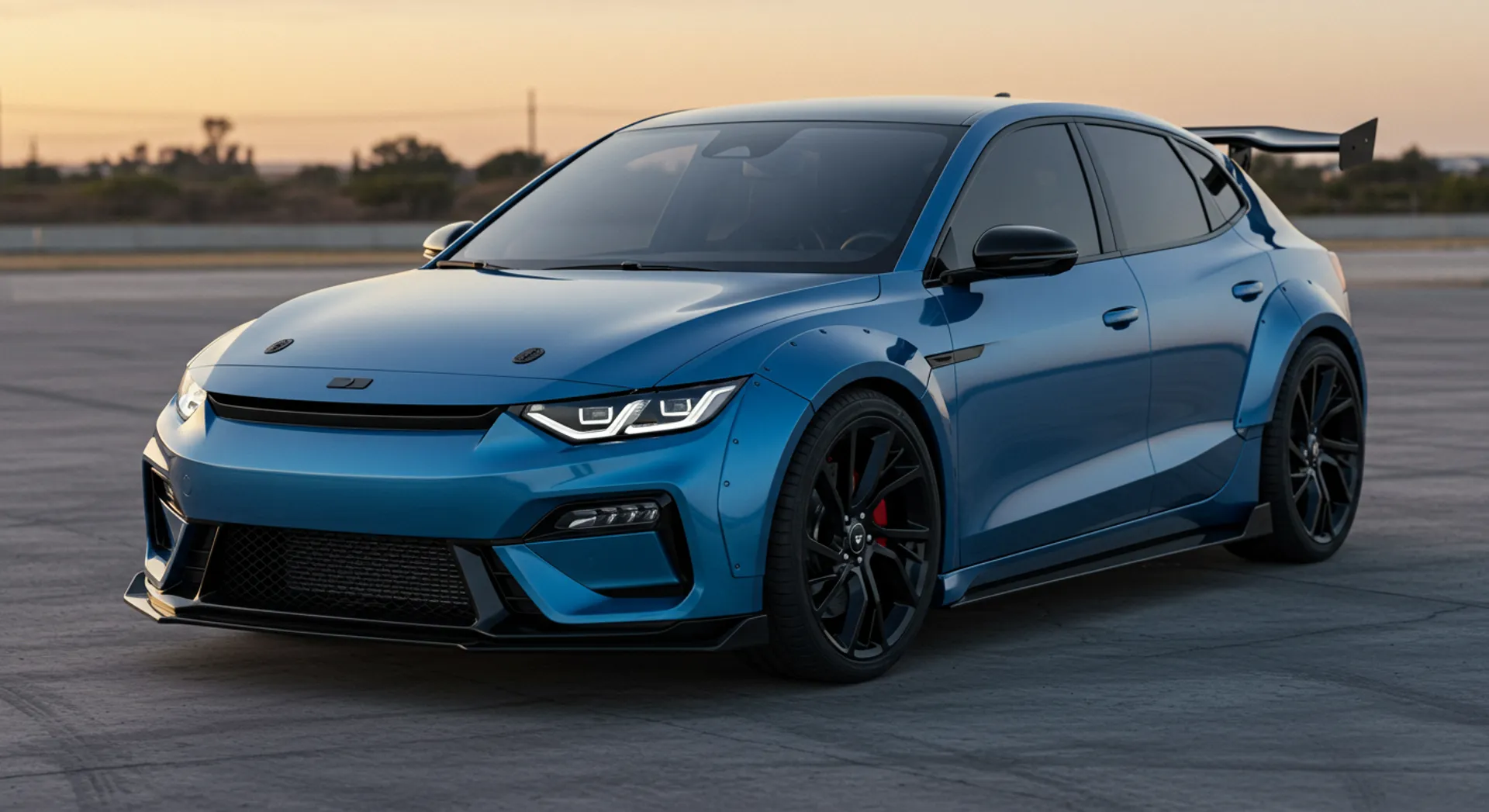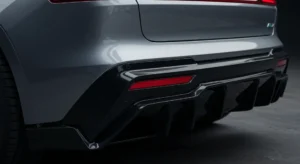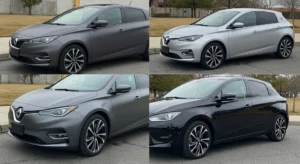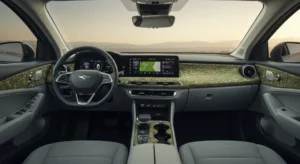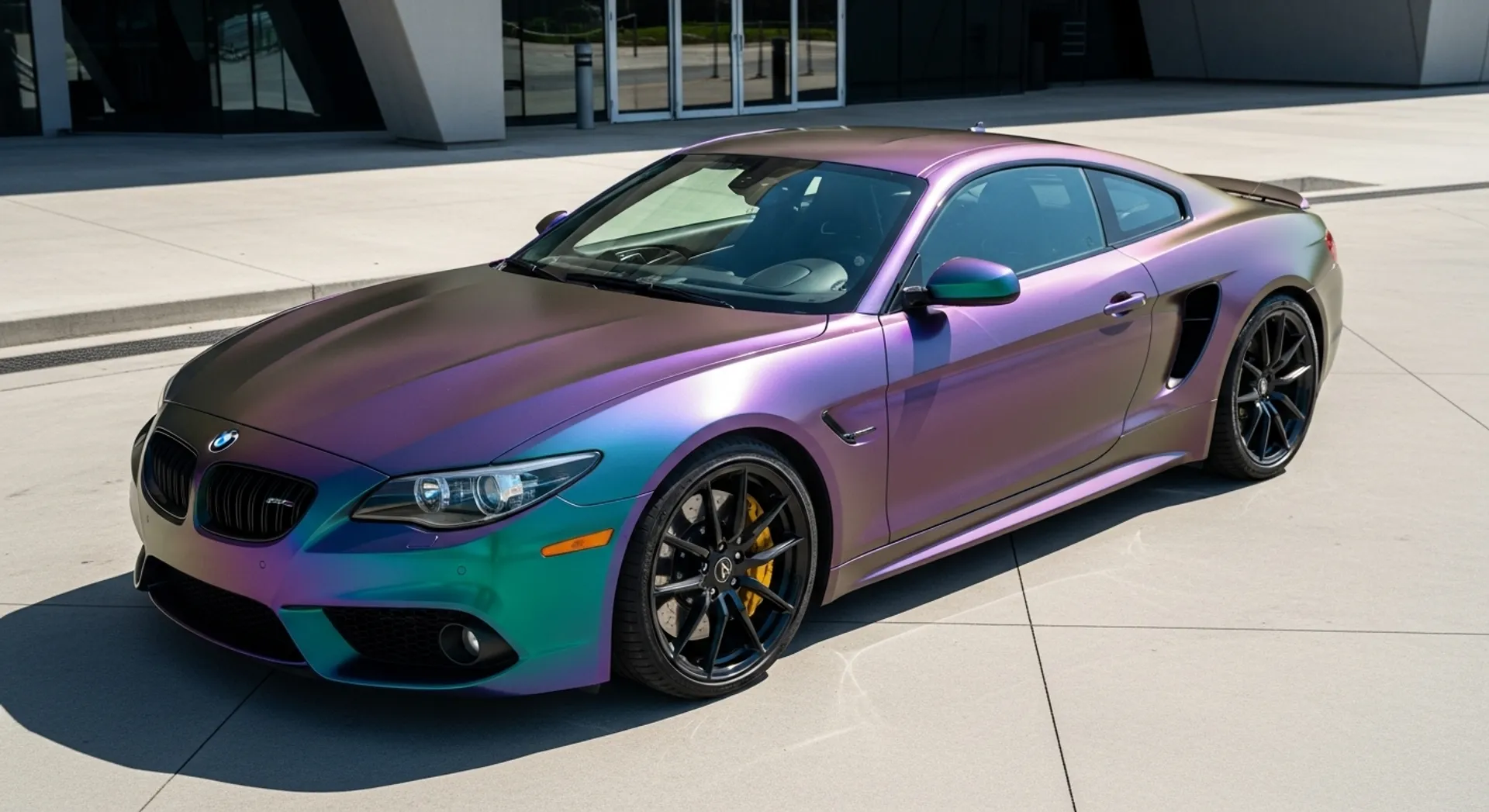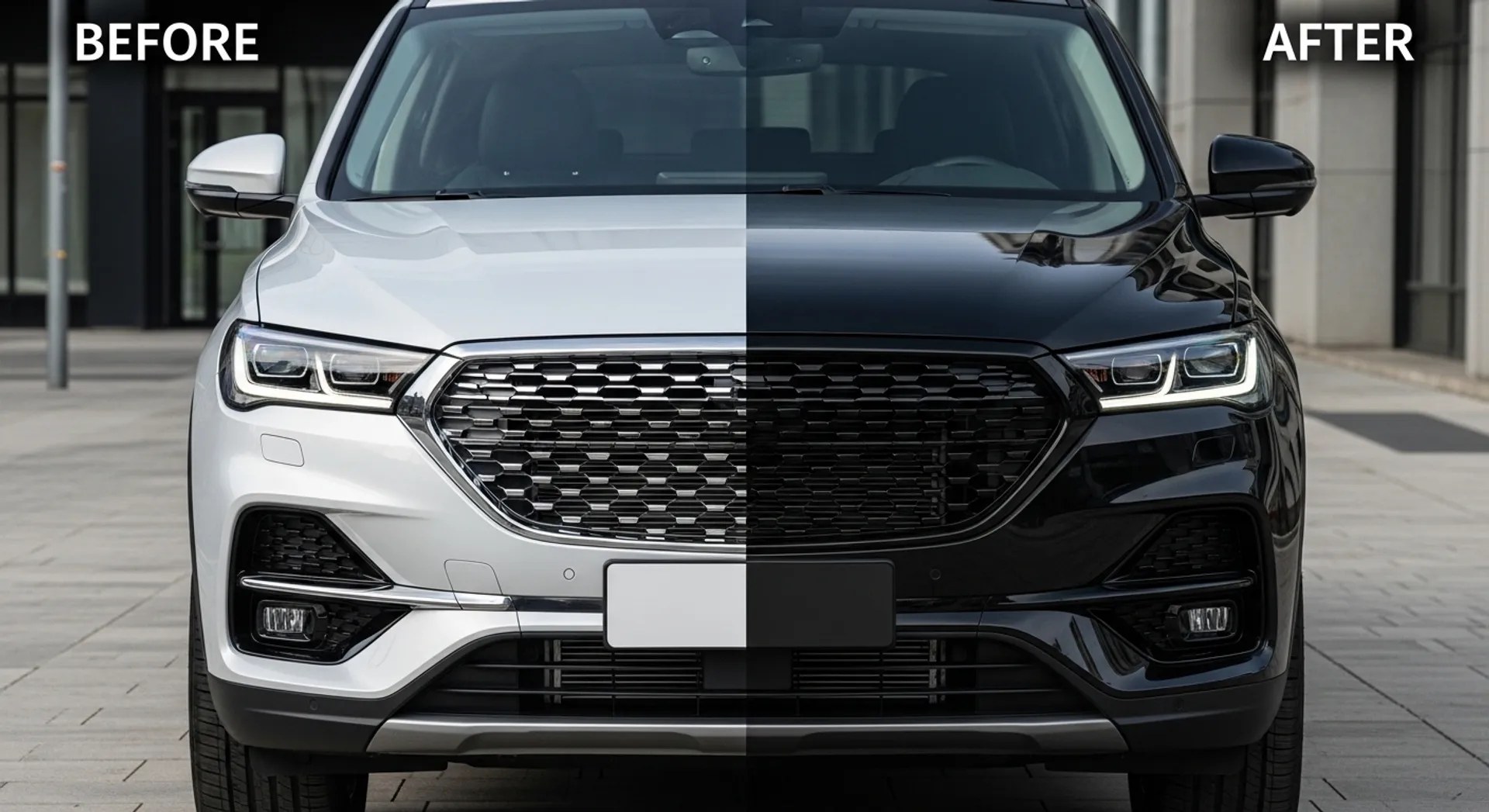1. Exterior Styling Mods Tailored for EVs
Unlike traditional cars, EVs benefit greatly from styling that enhances aerodynamics. A well-designed body kit can sharpen looks and reduce drag, which may help range at highway speeds. Popular upgrades include front splitters, air dams, side skirts, and rear diffusers specifically shaped for EV platforms. These parts often use lightweight composites such as carbon fiber or reinforced plastics to avoid adding unnecessary mass.
Lightweight rims and low-rolling-resistance tires are also in demand, providing both performance and visual appeal. Choosing wheels with aero covers or smooth designs can reduce turbulence around the wheel arches. If you want to dive deeper into why these parts matter, see the U.S. Department of Energy’s overview of vehicle aerodynamics, as well as a technical study on EV aero optimization from SAE International.
Lighting remains a major focus for both style and safety. LED daytime running lights, sequential indicators, and adaptive beams deliver a futuristic signature while improving visibility. For safety context and headlamp performance considerations, consult the NHTSA headlights resource. When adding auxiliary lighting or underglow, verify local rules to avoid fines (more on this in the legal section below).
Quick install tips: test-fit aero parts before paint or wrap, torque wheels to spec, and aim headlights properly. After any exterior mod, inspect panel gaps and fasteners after 200–300 km to confirm nothing has loosened.
2. Interior Styling Trends That Blend Comfort & Tech
EV interiors are evolving into high-tech, sustainable spaces. Recycled fabrics, vegan leather, and bio-based composites are increasingly common, offering premium feel without traditional leather.
Minimalist dashboards with large integrated displays, ambient lighting with configurable color zones, and wireless charging pads are now mainstream. Augmented reality (AR) head-up displays project navigation cues onto the windshield to reduce eye movement between road and screen. A supplier example is Continental’s AR HUD overview, which explains how information is layered into the driver’s field of view.
Interior upgrade checklist: choose low-VOC adhesives for upholstery, route wires through factory grommets, add felt tape to prevent rattles, and use CAN-bus–friendly harnesses for add-on electronics. For seat covers and dash trims, verify airbag compatibility before installation.
3. Paint, Wraps & Finishing Touches
Color and finish are powerful styling elements. In 2025, heat-reflective and UV-protective wraps are trending in warm climates because they help lower cabin temperature, easing HVAC load and potentially helping range. Chameleon and color-shifting finishes create dramatic effects under different lighting, while matte and satin wraps offer a premium, understated tone.
Paint protection film (PPF) is a smart add-on for owners who want to preserve resale value and keep the exterior looking new. Hydrophobic ceramic and graphene coatings make cleaning easier and enhance gloss.
Care & maintenance guidance: hand-wash wraps with pH-neutral shampoos, avoid harsh solvents, and use microfiber towels. For coatings, follow the manufacturer’s cure time and avoid automatic car washes during the first week. Reapply top-coat boosters as recommended to maintain beading and gloss.
4. Budget vs Premium Styling Paths
Styling can fit almost any budget. Entry-level upgrades like ambient lighting kits, custom floor liners, center console organizers, and partial wraps can deliver a big visual lift for a few hundred dollars. Mid-tier paths include aero add-ons in ABS/FRP, premium seat covers, and upgraded infotainment modules.
On the premium end, forged wheels, full carbon aero kits, and professional interior retrims provide the most dramatic results. A high-quality EV-specific aero kit can range from about $3,000 to $7,000 plus paint/wrap and installation. Before committing, evaluate the effect on range, tire wear, and insurance. For a primer on EV efficiency fundamentals that can inform styling choices, consult the U.S. DOE’s Alternative Fuels Data Center.
Smart budgeting tips: prioritize OEM-compatible parts, confirm return policies, and stage upgrades (wheels/tires first, then aero, then finishes) so you can evaluate each change. Keep your stock parts if you might revert before resale.
5. Maintenance & Safety Considerations
Styling should never compromise safety, efficiency, or warranty. Use certified installers for electrical work, and choose quality harnesses and relays for lighting. After adding larger wheels or lowering springs, get a four-wheel alignment to avoid uneven tire wear. If you retrofit lighting, review beam patterns and brightness to remain road legal.
Legal frameworks vary by country. In the Philippines, the Land Transportation Office (LTO) publishes guidance related to vehicle equipment and roadworthiness. EV-related policy continues to evolve under the Electric Vehicle Industry Development Act (EVIDA); you can review the official EVIDA Implementing Rules and Regulations (IRR) from the Department of Energy. For a broader environmental compliance context, see the U.S. EPA transportation & air rules.
Ongoing maintenance: re-torque wheels after installation, inspect aero fasteners periodically, and schedule electrical checks for added lighting. Wraps typically last 3–5 years depending on exposure and care; PPF may last longer on high-impact zones like the front bumper and hood.
6. Regional Trends: Styling in the Philippines vs Global Market
In the Philippines, hot and humid conditions make heat-reflective wraps, UV-blocking tints, and durable protective coatings especially popular. Ceramic or graphene coatings help with frequent rain by improving water beading and ease of cleaning. Wheel choices often prioritize pothole resistance and brake cooling alongside looks.
Regulation is also evolving. The government’s classification and recognition guidelines for EVs continue to be updated; see the Philippine Information Agency’s coverage of DOE recognition guidelines for context. Globally, consumer preferences are trending toward simpler front fascias and expressive lighting. For an academic look at design preferences, review this open-access study on EV front-end elements from MDPI (Applied Sciences).
Climate-aware choices: in warm climates, prioritize thermal wraps, UV-stable materials, and cabin heat management. In cooler regions, heated interiors, wheel designs that shed snow, and durable coatings to resist road salts become more relevant.
Practical Planning: Step-by-Step Styling Roadmap
- Define your goal: subtle premium look, motorsport-inspired, or tech-forward minimalism.
- Audit the car: note factory aero, wheel specs, brake clearance, and lighting tech.
- Stage upgrades: start with wheels/tires and alignment; add aero; finish with wrap/PPF and coatings.
- Electrical sanity check: calculate current draw for lighting; use proper fuses and relays.
- Document everything: keep receipts and part numbers for warranty and resale.
Conclusion
EV styling in 2025 is about more than looks — it’s about harmonizing efficiency, technology, sustainability, and everyday practicality. From aerodynamic body kits to eco-conscious interiors and smart coatings, you have more choices than ever to personalize your EV. Plan your upgrades in stages, follow local rules, and maintain your additions carefully so your EV looks stunning without sacrificing performance or legality.

